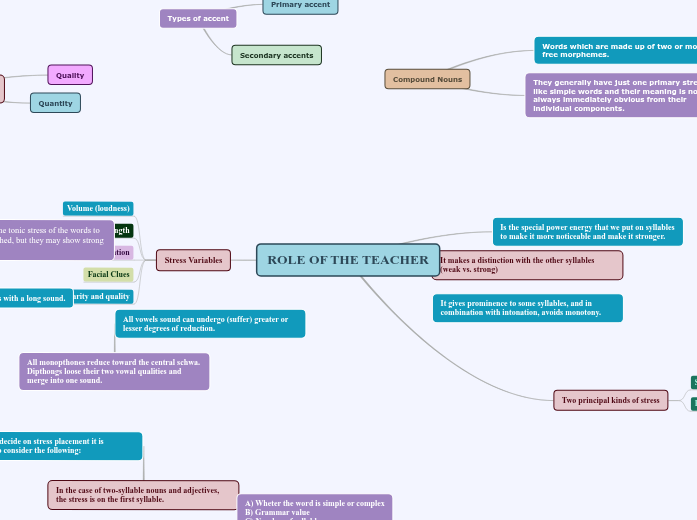ROLE OF THE TEACHER
Is the special power energy that we put on syllables to make it more noticeable and make it stronger.
Two principal kinds of stress
Static Stress
Kinetic Stress (Last piece of information)
Stress Variables
Volume (loudness)
Length
Pitch Variation
Facial Clues
Clarity and quality
It makes a distinction with the other syllables (weak vs. strong)
It gives prominence to some syllables, and in combination with intonation, avoids monotony.
All monopthones reduce toward the central schwa. Dipthongs loose their two vowal qualities and merge into one sound.
All vowels sound can undergo (suffer) greater or lesser degrees of reduction.
In the case of two-syllable nouns and adjectives, the stress is on the first syllable.
In order to decide on stress placement it is necessary to consider the following:
A) Wheter the word is simple or complex
B) Grammar value
C) Number of syllables
D) Phonological structure
It is as important to work on unstressed as it is to work on stressed syllables. They are on equal terms.
PREFIXES
They do not affect the tonic stress of the words to which they are attached, but they may show strong stress themselves.
In general secondary stress with a long sound.
SUFFIXES
There are three different classes
Those which do not affect the stress
Those which attract the primary stress onto themselves
Those which move the stress up towards them
Subtema
